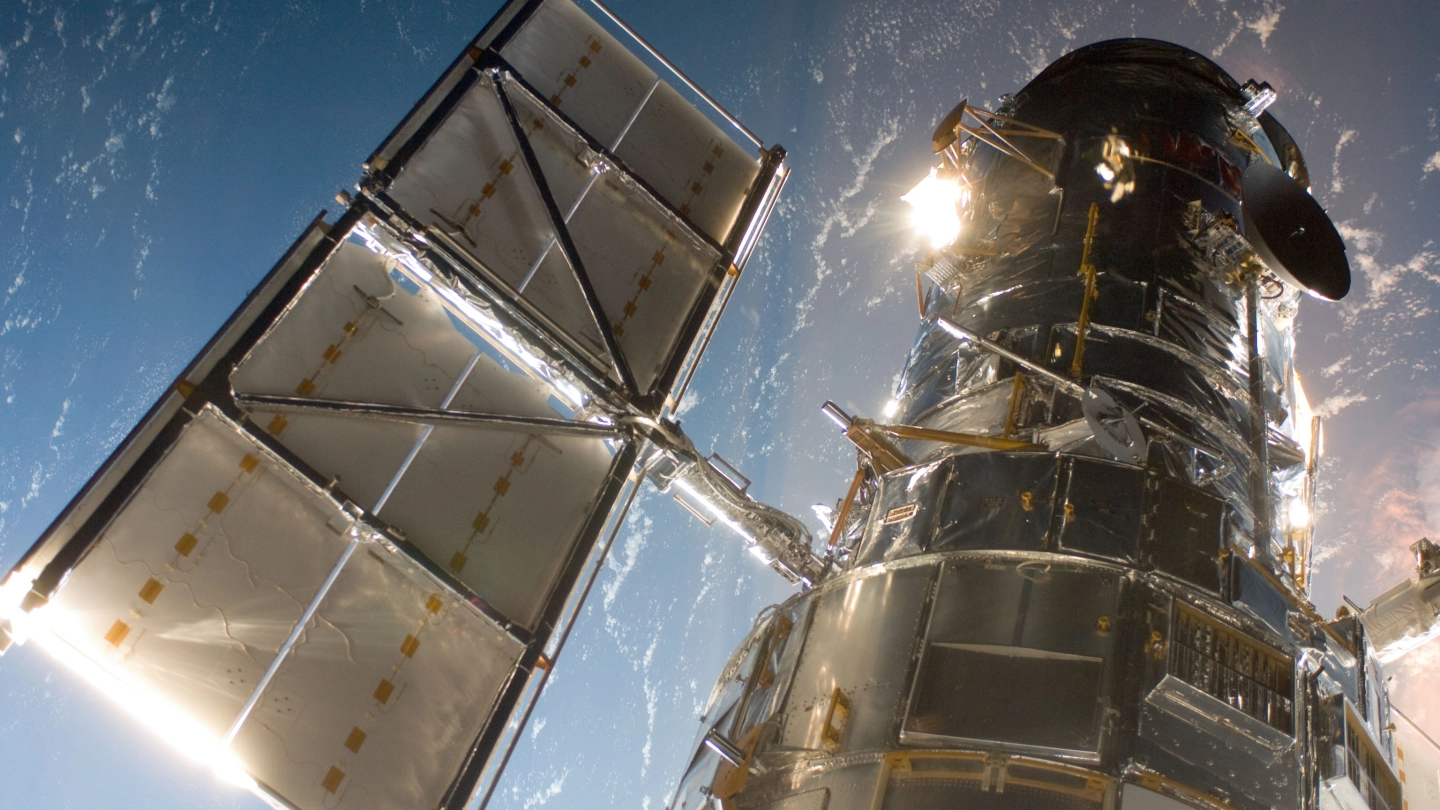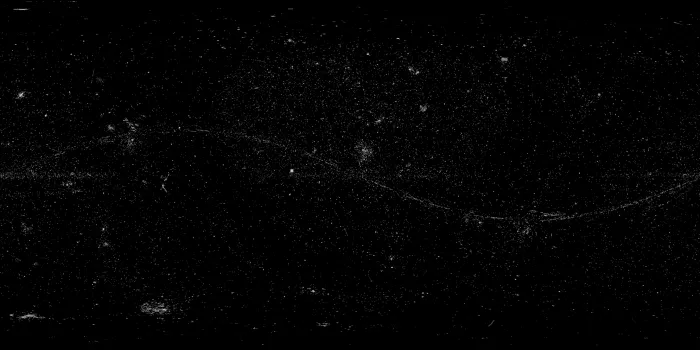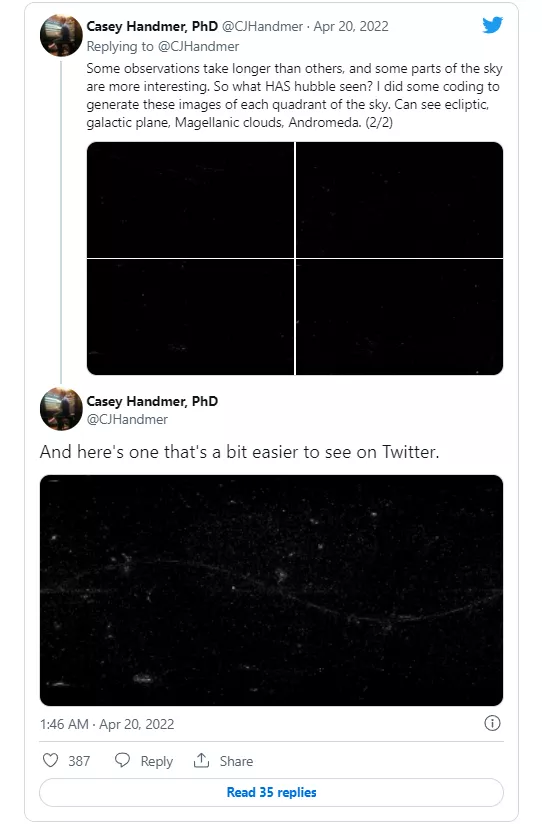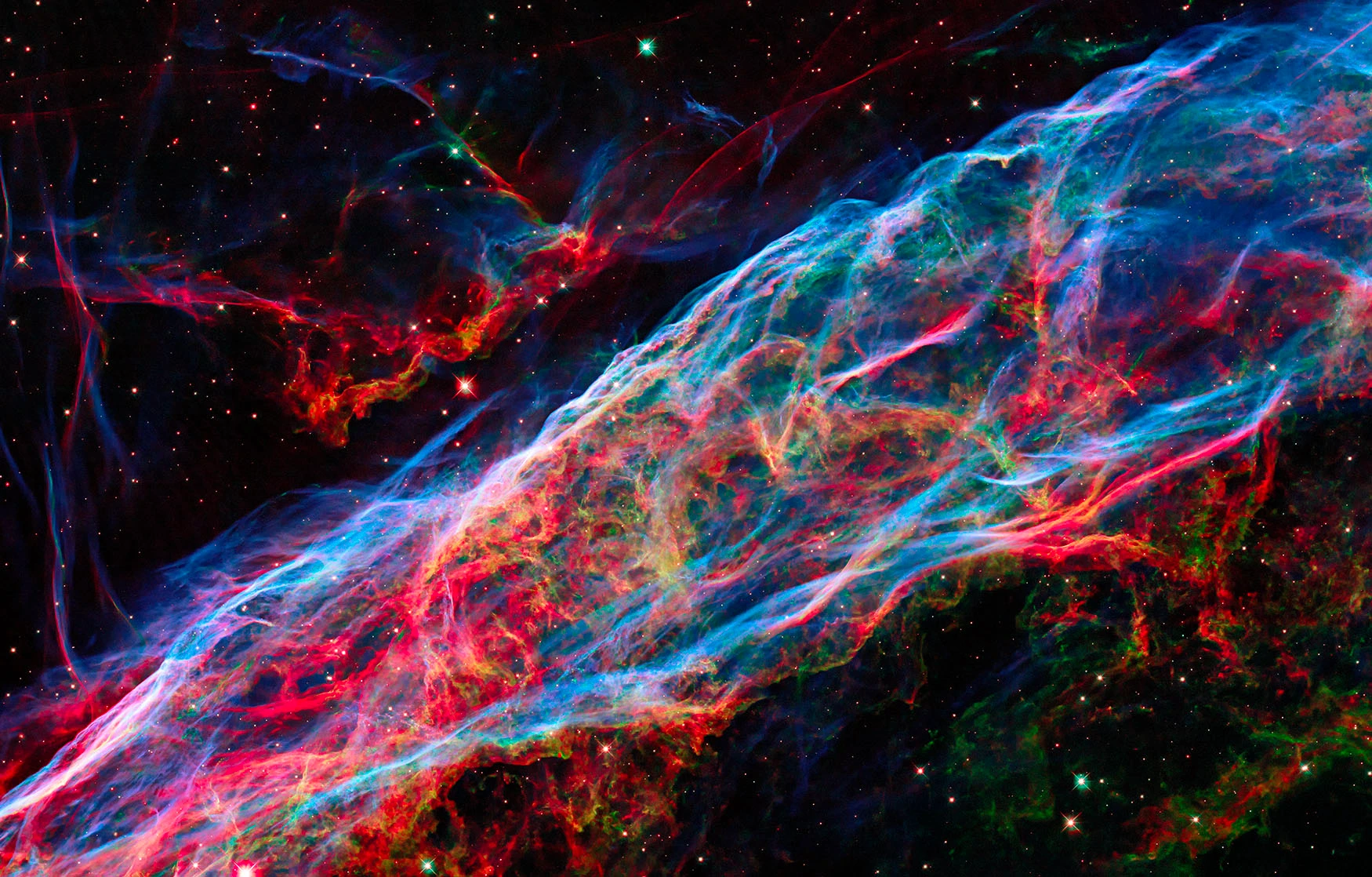NASA recently celebrated the 32nd anniversary of the Hubble observation mission. The space telescope was launched as early as 1990. Since its launch, it has successfully completed more than 1.4 million observations. Now, a physicist named Casey handler combines all these observations into an amazing image**

Handler shared this picture on Twitter as early as April. He initially shared the picture in four parts. However, he later tweeted to integrate the entire Hubble observation data.

This photo is absolutely amazing. It clearly reminds people how big the sky outside the earth is. In fact, handmer said, Hubble didn't even successfully observe as many skies as you thought.

"Hubble's field of view is 202 arc seconds," handler explained on twitter. Therefore, he said, it would take about 3.2 million observations to fully cover the whole sky. At that time point, more than 1.4 million Hubble observations have been completed. So can it be considered that the telescope must have captured at least half of the sky?
This is not the case. Although Hubble has made more than 1.4 million observations, it often makes multiple observations in an area. Handmer was curious about exactly how much Hubble saw, from astropy Org collected the data and began compiling it into a picture. He said that so far, Hubble has only seen about 0.8% of the sky.
If Hubble has completed half of the observations needed to cover the sky, why is there so little observed? There are several reasons for this. First, NASA did not consider wide area observation when designing Hubble. Therefore, its observations are more targeted. Some parts of the sky are more interesting than others.

Handmer explained that some Hubble observations may also be longer than others. This does not even take into account the number of repeated observations in interesting areas. However, the point is that NASA did not design Hubble to draw the whole sky. Instead, the agency is designed to capture snapshots of specific locations. In order to study our universe more deeply.
It is intended as a way to study specific points of interest in the night sky. These points of interest, including black holes, Galaxy collisions and other celestial anomalies, can help us better understand our universe.
If you look at the picture above, you will have a good understanding of the Hubble observations that have been completed so far. And if you follow an arc through the center, you can actually see a representation of repeated observations through the solar system.
Although Hubble has only explored so few skies, it is almost exciting to see this picture together with all these Hubble observations. In the past 32 years, mankind has made great progress in understanding the universe beyond our small planet. Moreover, with new instruments such as the James Webb telescope, these advances will undoubtedly continue in the future.